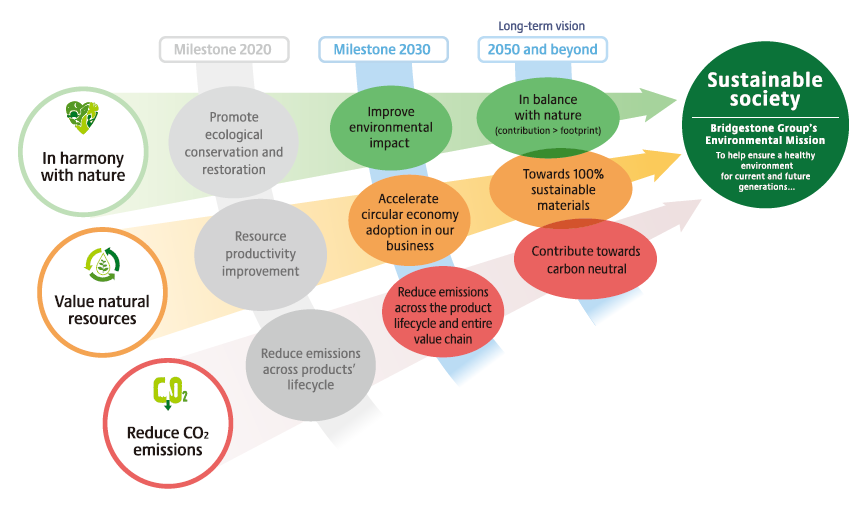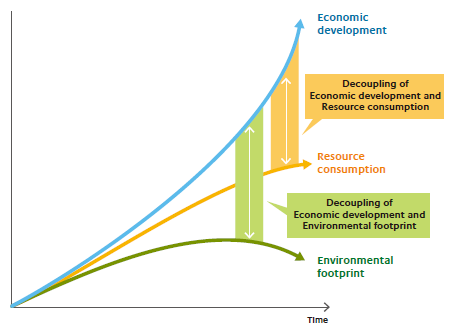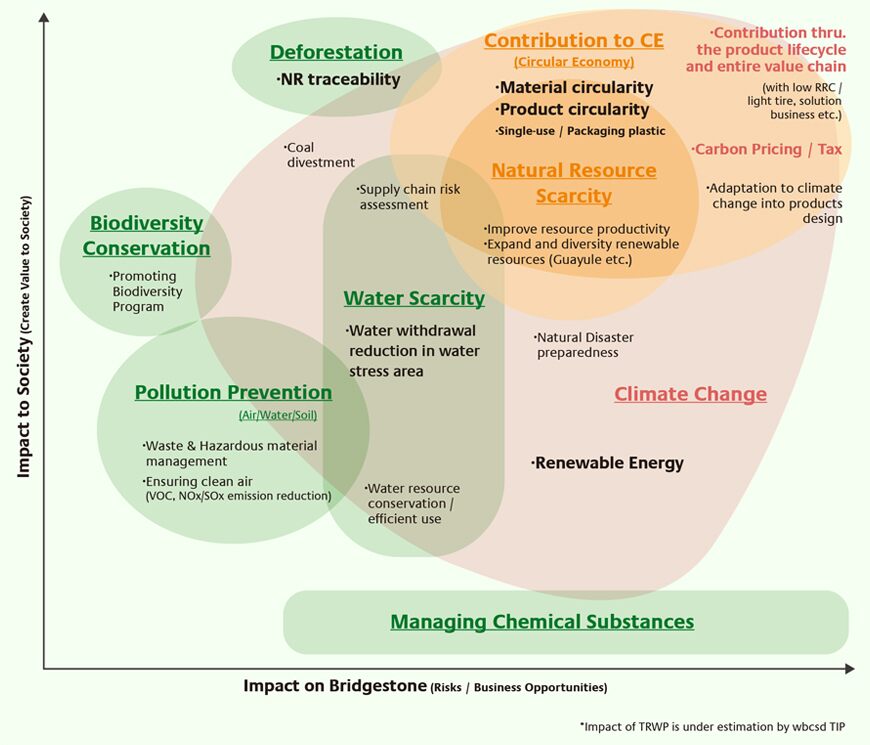It is expected that in 2050, the world population will surpass 9.7 billion*1 and the number of automobiles will increase to 2.4 billion*2. Moreover, CO2 emissions in the world are predicted to rise from 28 Gt to 75 Gt from 2008 to 2050*3.
With the increased demand for automobiles driven by population growth and improved living standards, the world will face significant challenges in climate change, resource depletion, and biodiversity loss. As a global company, the Bridgestone Group recognizes its responsibility to meet the diverse needs of society while ensuring a stable supply of high-quality products. In fulfilling these responsibilities, it aims to contribute to building a sustainable society by aligning its operations with the Earth’s capacity.
Based on this philosophy, Bridgestone has set the long-term environmental vision targeting 2050 and beyond, focusing on three key activity areas. The following initiatives are conceived to help realize the sustainable society described in the Environmental Mission Statement, which outlines the direction of its long-term environmental goals established in 2012.



